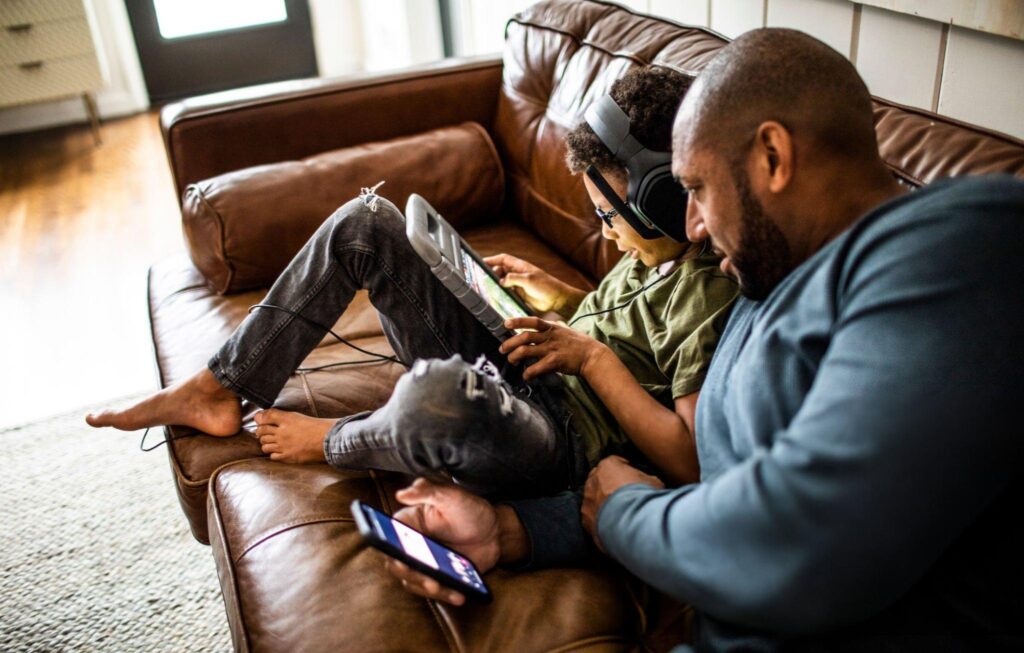Why Every Family Needs a Digital Safety Plan
Imagine this. You’re sitting at the dinner table, and your child blurts out something they saw online that leaves you shocked. Or maybe you find a suspicious message on your teen’s phone. Today, digital life is family life. Kids grow up with tablets, parents manage bills online, and even grandparents chat through video calls. But just as we lock our doors at night, we need a Family Digital Safety Plan to protect our loved ones in the online world.
Without a plan, families face risks like identity theft, cyberbullying, online scams, or unsafe screen habits. The good news? Creating a plan doesn’t need to feel overwhelming. Think of it as building a digital seatbelt for your family. In this guide, I’ll walk you step by step, with personal tips, expert-backed strategies, and easy-to-follow actions.
Step 1: Understand the Risks Your Family Faces Online
The first step in any Family Digital Safety Plan is awareness. According to a 2024 Pew Research study, over 70% of parents worry about their child’s online safety. And it’s not just kids at risk—adults face phishing emails, fake job postings, and privacy leaks too.
Some common risks include:
-
Cyberbullying: Teens report it as one of the top online threats.
-
Scams & Phishing: Fraudsters trick people into giving away passwords or money.
-
Screen Overload: Too much screen time affects sleep, focus, and family bonding.
-
Strangers Online: Kids can be lured into risky conversations.
-
Data Privacy: Apps and websites collect more data than many realize.
When I first started talking about online safety with my younger cousin, I was surprised how much he knew about gaming scams but had no idea that sharing his birthday online could put him at risk. That’s where the plan kicks in—teaching the basics that many kids (and adults) miss.
Step 2: Set Family Rules for Device and Internet Use
Every strong plan starts with boundaries. Just like households set rules about chores or bedtime, digital rules should be clear and fair.
Here’s how to start:
-
Create “Tech-Free Zones.” For example, no phones at the dinner table or in bedrooms at night.
-
Set Screen-Time Limits. The American Academy of Pediatrics suggests keeping recreational screen time under 2 hours daily for kids.
-
Agree on Age-Appropriate Apps & Games. Parents and kids can review app ratings together before installing.
-
Online Respect Policy. Teach kids to treat others online as kindly as they would face-to-face.
Personal Tip: In my family, we use a “charging station” in the living room. All devices are left there overnight. It started as a rule for the kids, but honestly, it improved everyone’s sleep—including mine.
Step 3: Protect Accounts with Strong Passwords and Privacy Settings
Weak passwords are like leaving your house unlocked. In 2023, NordPass revealed that “123456” was still the most-used password worldwide.
Your Family Digital Safety Plan should include:
-
Unique Passwords for Each Account. Never reuse the same one.
-
Password Managers. Tools like LastPass or 1Password help organize them safely.
-
Two-Factor Authentication (2FA). Adds an extra lock even if a password is stolen.
-
Privacy Checkups. Platforms like Facebook and Google offer built-in privacy reviews—use them!
A friend of mine learned the hard way when her Netflix account got hacked. It wasn’t about the movies—it was the same password she used for her bank login. That mistake cost her hundreds of dollars. A simple family password policy could’ve prevented it.
Step 4: Teach Kids About Online Stranger Danger
We teach kids not to talk to strangers in parks. But many forget to apply the same rule online.
Talk about these key lessons:
-
Don’t share personal info (school name, address, birthday) with strangers.
-
Never meet online friends without parental approval.
-
Report suspicious messages right away.
Case Study: In 2022, the FBI reported that more than 20,000 children were targeted in online exploitation attempts. Many cases began in innocent-looking gaming chats. That’s why open conversations at home are essential.
Step 5: Monitor and Guide—Without Spying
This is the trickiest part. Kids value privacy, but parents need to ensure safety. The balance? Transparency.
Instead of secretly tracking every click, explain that monitoring tools are like training wheels—there for safety, not punishment.
Some helpful tools:
-
Google Family Link (for Android): Sets limits and filters.
-
Apple Screen Time (for iOS): Lets you see and manage usage.
-
Bark: Monitors for bullying or risky messages.
I once helped a neighbor set up parental controls after her son accidentally spent $200 on in-game purchases. She worried he’d feel spied on, but framing it as “family teamwork” made him surprisingly cooperative.
Step 6: Prepare for Emergencies
Even the best rules can’t prevent everything. A Family Digital Safety Plan needs a clear emergency protocol.
Consider writing down:
-
What to do if a device is lost or stolen. (Remote wipe settings help here.)
-
Who to contact if an account is hacked.
-
Steps for reporting cyberbullying. Most platforms have reporting features.
-
Family “Check-In Word.” A simple code word kids can use if they feel unsafe online.
Think of it like a fire drill, but for digital life. Families that practice these steps once in a while react faster when it matters.
Step 7: Lead by Example
Kids learn by watching. If you’re scrolling at 2 AM or oversharing online, your rules won’t mean much.
Try these habits:
-
Put your phone away during family time.
-
Show how to politely decline suspicious friend requests.
-
Talk openly about your own mistakes (like clicking a scam link).
When my niece saw me ignore a spam email, she asked why. That one moment turned into a mini lesson about phishing scams—far more effective than any lecture.
Table: Family Digital Safety Plan Checklist
| Step | Action | Benefit |
|---|---|---|
| Awareness | Discuss risks openly | Builds trust & awareness |
| Rules | Set tech zones & limits | Reduces conflicts |
| Security | Strong passwords & 2FA | Protects accounts |
| Stranger Danger | Teach safe chat habits | Prevents exploitation |
| Monitoring | Use parental tools transparently | Guides kids responsibly |
| Emergency Plan | Write protocols | Quick response in crisis |
| Lead by Example | Model healthy behavior | Reinforces lessons |
FAQs About Creating a Family Digital Safety Plan
Q: At what age should I start teaching kids about online safety?
A: As soon as they start using devices—even toddlers can learn “don’t click without asking.”
Q: Should I ban social media completely?
A: Not necessarily. It’s better to guide safe usage than to enforce total bans, which can lead kids to hide behavior.
Q: How often should we update our Family Digital Safety Plan?
A: At least once a year, or whenever kids start new apps, school terms, or devices.
Conclusion: Take the First Step Today
Creating a Family Digital Safety Plan doesn’t have to be complicated. Start small—set one tech-free rule tonight or review one password tomorrow. Over time, these steps build a stronger safety net for your loved ones.
The online world is amazing. It connects families, educates kids, and opens opportunities. But just like teaching children to look both ways before crossing the street, we must teach them digital safety. The earlier you start, the safer your family becomes.
So grab a notebook, call a family meeting, and begin crafting your digital safety plan tonight. Your future self—and your family—will thank you.


